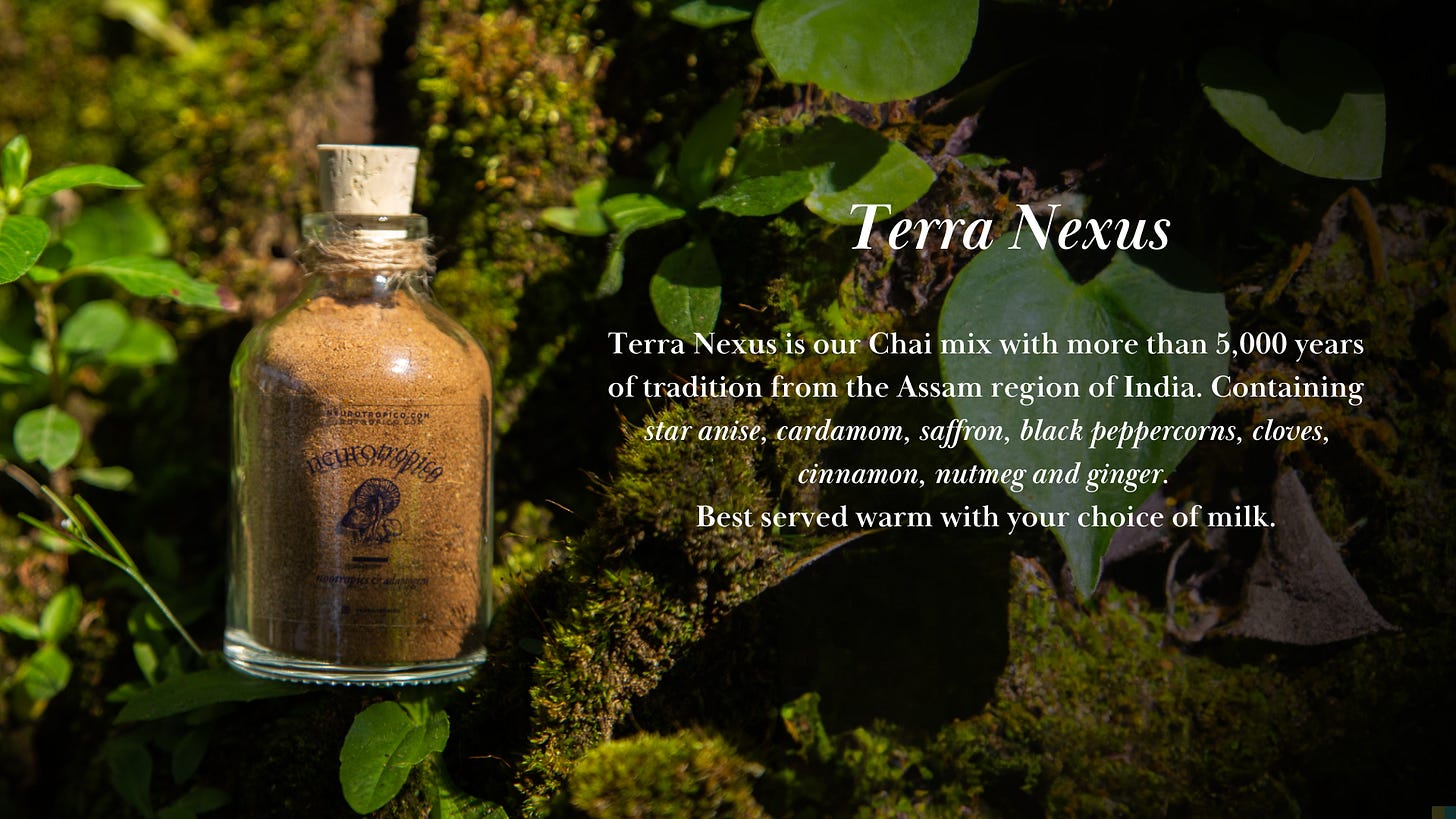Welcome to NeuroTrópico, a functional bio-lab on NooTropics and Adaptogens of superfoods from around the world.
This newsletter is a hub for all things natural for enhancing the mind and feeding the soul. Every week we’ll provide recipes, stories, puzzles, research, and more.
Join us on this journey into Ancestral Knowledge and Botanical Arts
The domestication of Plants and taming of Nature provided us with technologies that shaped our cultures and transmitted ancestral knowledge. Being trained in the Art of Cinema, I am drawn to tales of origin that help shape the future by going into what the past has to tell us; I would like to share a beautiful short film that explains our relationship with plants “The First entanglement” by Scientific American.
Tales by Origin: Theobroma Cacao Tree
It all began in the Amazon Rainforest.
The Amazon is the biggest and most biodiverse tract of tropical rainforest in the world, with an estimated 390 billion individual trees in roughly 16,000 species, making up more than half of the planet's remaining rainforests. There is a clear link between the health of the Amazon and the health of the Earth; and also the origin of the Theobroma Cacao tree.
Theobroma Cacao is the modern scientific name. In fact, it is appropriate since Theo is Greek for "meal of the gods," which signifies "food of the gods."
Genetic analysis reveals that the upper Amazon region of northwest South America has the most diversity of Theobroma Cacao indicating that this area is where the species originated. The Santa Ana-La Florida discovery in Ecuador yielded ancient DNA, cacao starch grains, and theobromine residues that date to about 5,300 years ago. These discoveries represent the earliest indication of the usage of Cacao in South America, includingthe use of the seeds as medicine and food. It also suggests that the upper Amazon region is the oldest known center of Cacao tree origins.
Studies also showed that humans had spread the plant, and the first center of domestication and culture has been identified in Central America with the Maya and Aztec civilizations.
The question is, how did it get from the Amazon Rasin into Central America? The Mayo Chinchipe culture from Ecuador is thought to have interacted with people along the Pacific coast, and it is possible that they exchanged Cacao beans with traders who then took it up north to Mesoamerica.
However, the Mayas were the first civilization to domesticate the plant and create a recipe with cacao beans as the main ingredient. Theobroma cacao was consumed by the Preclassic Maya as early as 600 BC, pushing back the earliest chemical evidence of Cacao use by some 1,000 years. And as a consequence, the word "chocolate" comes from the Mayan word "Xocolatl," which means "bitter water" and it was originally consumed as a beverage.
At NeuroTrópico Lab we love experimenting so we did a variation and we are sharing the recipe.
Maya Xocolat Recipe with our latest Terra Nexus Potion.
Making this beverage will take some time; even when the Mayans made it frequently, they had to spend some time using stones to ground the beans into a paste.
We share a beautiful book to get inspiration while making Hot Xocolatl The Joy of Chocolate: Recipes and Stories from the Wonderful World of the Cacao Bean on Amazon.
Terra Nexus Xocolatl
Dried Cacao Beans
Boiling water
Honey
You’ll also need a pestle and mortar to make it a more accurate recipe than using a modern grinding machine.
Step-by-Step
Place the cacao beans in the pestle and mortar and start to grind.
Add Terra Nexus Potion to Cacao Paste and mix and transfer to a bowl
Add boiling water
Add Honey and mix it all together.
Pour into a cup and enjoy!
With love
From Neurotropico’s Minds.
Santa Rosa de Cabal, Risaralda - Coffee Axis, the Mountains of Colombia.








